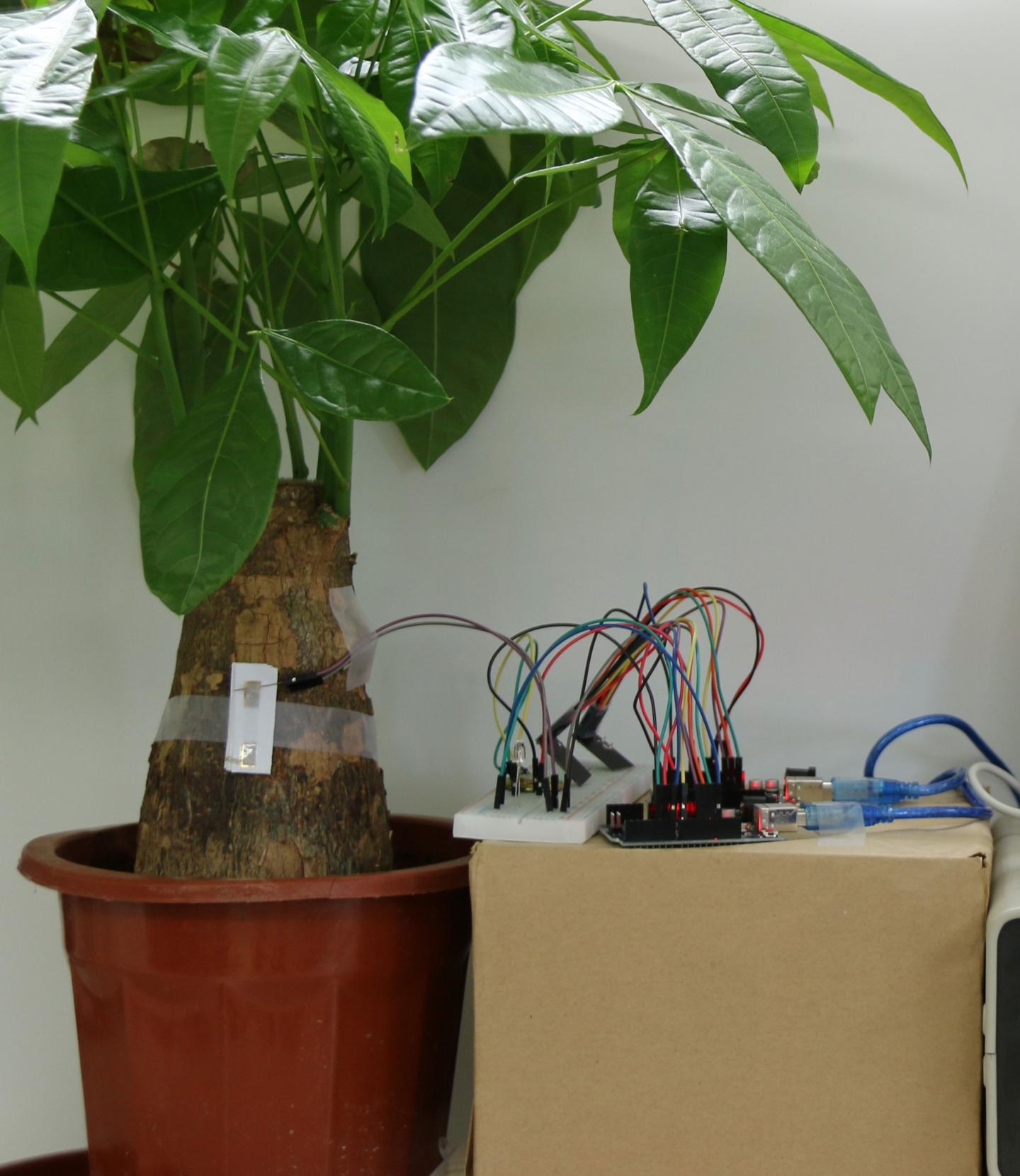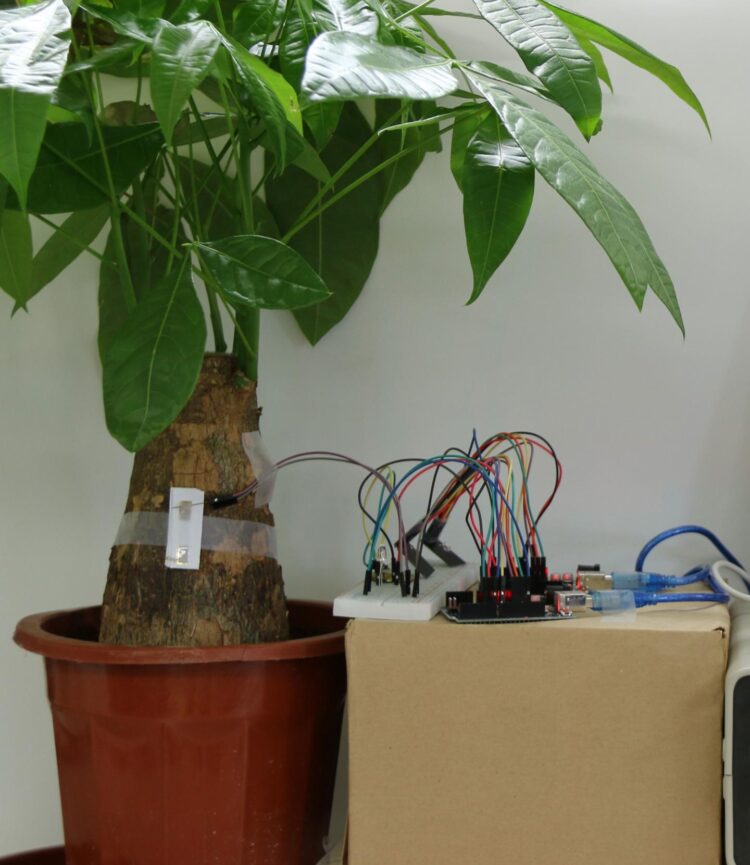
Credit: Adapted from ACS Applied Materials & Interfaces 2020, DOI: 10.1021/acsami.0c04798
Recent devastating fires in the Amazon rain forest and the Australian bush highlight the need to detect forest fires at early stages, before they blaze out of control. Current methods include infrared imaging satellites, remote sensing, watchtowers and aerial patrols, but by the time they sound the alarm, it could be too late. Now, researchers reporting in ACS Applied Materials & Interfaces have developed self-powered “paper chips” that sense early fires and relay a signal.
Previously, scientists have proposed placing a network of sensors in the forest that could detect changes in temperature, smoke or humidity and wirelessly transmit a signal to responders. However, such a system hasn’t yet seemed practical because all of the sensing components require power. Batteries would eventually go dead and need to be replaced. Thermoelectric materials, which convert temperature differences into electricity, could simultaneously detect temperature increases from fires and power themselves. However, most of these materials are solid inorganic semiconductors, which are often expensive, rigid and environmentally unfriendly. Yapei Wang and colleagues wanted to find out if ionic liquids could be used as thermoelectric materials for fire sensing. These fluids are salts in the liquid state, and two different types of ionic liquids can be connected in series to generate signals.
To make paper-based thermoelectric sensors, the researchers chose two ionic liquids that behaved differently when the temperature increased: One adsorbed to the surface of gold electrodes, while the other desorbed, producing opposite (positive or negative) voltages. They deposited each ionic liquid like an ink between two gold electrodes that were sputtered onto a piece of ordinary paper. When connected in series, the two ionic liquids produced an electric signal when a large temperature difference occurred, as would happen in a fire. In a pilot test of the new sensor, the researchers attached one to a houseplant. When they placed a flaming cotton ball close to the plant’s roots, the temperature at the bottom of the sensor quickly increased, producing a voltage signal that an attached microcomputer chip wirelessly transmitted to a receiver. Upon picking up the signal, the receiver activated a sound alarm and a red light. The thermoelectric paper chips are cheap ($0.04), and the materials are eco-friendly, the researchers say.
###
The authors acknowledge funding from the National Natural Science Foundation of China and the National Key R&D Program of China.
The abstract that accompanies this paper can be viewed here.
The American Chemical Society (ACS) is a nonprofit organization chartered by the U.S. Congress. ACS’ mission is to advance the broader chemistry enterprise and its practitioners for the benefit of Earth and its people. The Society is a global leader in providing access to chemistry-related information and research through its multiple research solutions, peer-reviewed journals, scientific conferences, eBooks and weekly news periodical Chemical & Engineering News. ACS journals are among the most cited, most trusted and most read within the scientific literature; however, ACS itself does not conduct chemical research. As a specialist in scientific information solutions (including SciFinder® and STN®), its CAS division powers global research, discovery and innovation. ACS’ main offices are in Washington, D.C., and Columbus, Ohio.
To automatically receive news releases from the American Chemical Society, contact [email protected].
Follow us: Twitter | Facebook
Media Contact
Katie Cottingham
[email protected]





